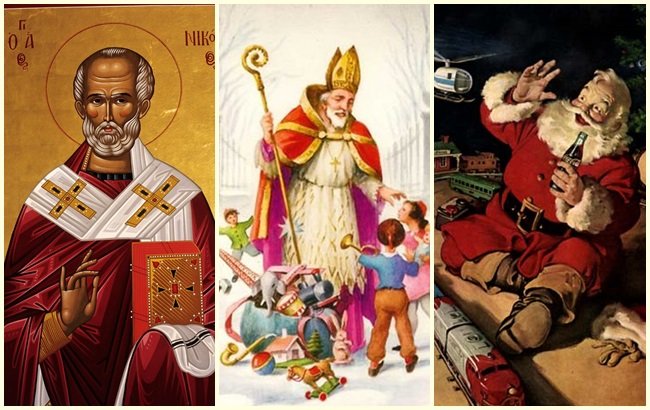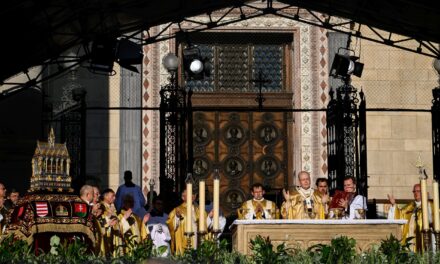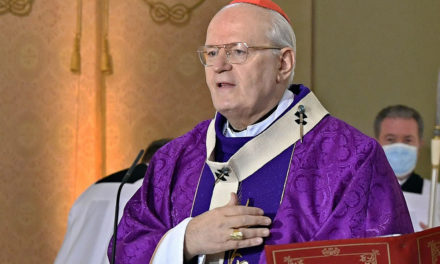On December 6, we celebrate the feast of Bishop Saint Nicholas. The patron saint of children, the unmarried, travelers, pilgrims, sailors and merchants, he is one of the most popular patron saints of the Catholic and Orthodox churches.
The Life of Saint Nicholas
Little authentic historical data has survived about his life. Presumably AD. He was born in 245 in Anatolia, Asia Minor, in the city of Patara, as the child of a wealthy family. According to some sources, he chose the priestly profession as an adult, and was ordained a priest at the age of 19 by his uncle, the then Archbishop of Patara. He later settled in Myra, the capital of Anatolia. He was not yet 30 years old when the city chose him as its bishop under the influence of a heavenly sign. He held his position for five decades, and is said to have participated in the First Council of Nicaea in AD. in 325.
According to legends about him, he distributed his wealth among the poor. His life was devoted to charity, the protection of those in trouble and children. Due to his actions, he soon received the respect due to saints during his lifetime. According to tradition, AD He died on December 6, 342 in Myra. In Western Christian culture, this day has been observed since the 10th century.
His legends and his respect
Its first written mention can be found in the Legenda Aurea (Golden Legend) created in the 13th century. In addition to the story of his election as bishop, posterity also attributes several wonderful legends to him. One of his most frequently mentioned miracles is when he saved the lives of sailors caught in a storm. Since then, he has been the patron saint of travelers, sailors, merchants and pilgrims. He is also credited with the legend of a butcher who lived in his town killing three small children: Miklós, however, exposed his crime and resurrected the victims. That is why he is also the patron saint of children and students.
According to the most famous story related to his name, there lived in his city an impoverished nobleman who had three daughters. After he could not get them married, the fate of unmarried girls of joy awaited them. After the bishop found out about the incident, he threw a purse full of gold through the nobleman's window under the cover of night. His daughters thus escaped the sad fate that awaited them and got married.
According to hagiographers, these narratives also contain features of other saints who probably lived in the 6th century. Thus, according to scholars dealing with the lives of saints, Bishop Miklós was already revered in the 6th century in the East, in the city of Myra and in Constantinople. His legend may also have originated in the Greek cultural circle at this time. From there it later spread in the Slavic and Russian churches. He is still highly respected in the Orthodox Church and always appears on iconostases. He was once the main patron of Russia.
Its tradition in the European cultural circle
His respect in the European cultural circle only spread slowly and later. In the 9th century, he was already revered in a Roman basilica. In 1087, Italian merchants discovered his relics in the Italian city of Bari. As a result, the Miklós honor became known throughout Europe. Thus, it came to Germany at the end of the 10th century, and was taken to France and England by the Normans at the end of the 11th century.
In Germany, his cult later became intertwined with the local custom of citizens distributing gifts to children on his holiday. The custom, which later became a tradition, spread, initially in England, and then throughout the continent. It appeared in Hungary in the middle of the 19th century.
According to some sources, the custom of giving gifts to children on the 6th of December probably originated in the 11th century. The story of the three children mentioned above was later dramatized. The tradition of visiting and giving gifts to the children finally developed from the bishop's play performed on the eve of the sixth of December. Other sources, however, consider the story of helping unmarried girls to be the origin of gift giving under the cover of night.
The veneration of Saint Nicholas has undergone many changes over the centuries. The figure of the bishop who once lived helping the poor and those in trouble is now hard to distinguish from the figure depicting Santa Claus with a big beard and red clothes. Its celebration is now an important part of the Advent season. And its tradition carries an important message for today's people as well.
Source: István Diós: The Life of the Saints, MTI, Magyar Kurír













